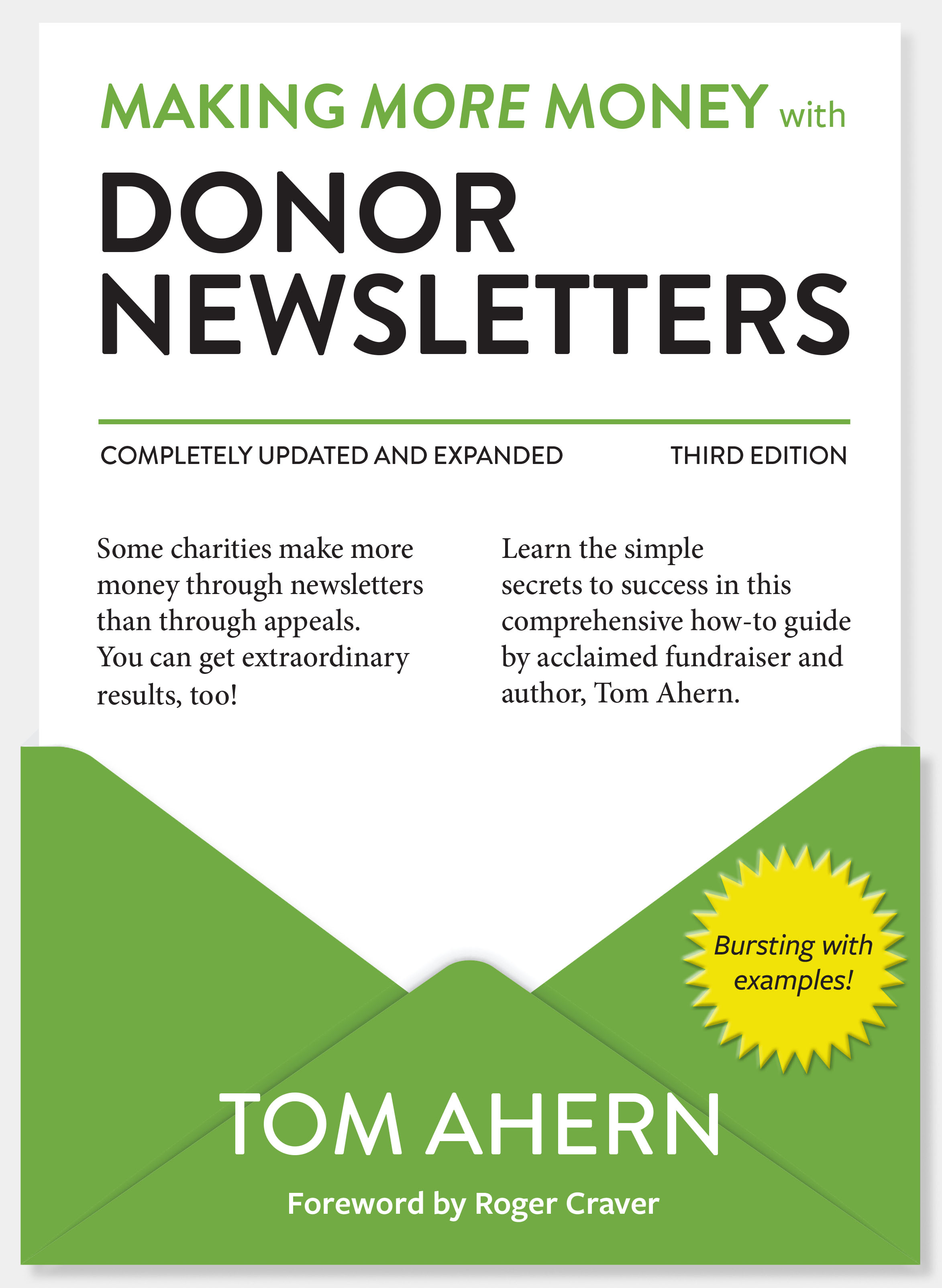- Home
- About Us
- The Team / Contact Us
- Books and Resources
- Privacy Policy
- Nonprofit Employer of Choice Award

Almost every donor newsletter I see — print or digital —suffers from at least one of the following fatal flaws, listed here in no particular order.
Note: I didn’t say “moderately destructive” flaws nor “mildly offensive” flaws. These nine flaws are grave. It amazes me how many donor newsletters suffer from all nine.
Flaw #1: Your newsletter avoids using the word “you”
A good donor newsletter is friendly, even intimate, in tone. It embraces the reader in a very obvious way by generously using the word “you,” especially in the headlines. If you insist instead on a corporate voice (a lot of “we did this, we did that”), you’ll keep your readers at arm’s length and prevent them from crawling into your lap for a head rub (cat lovers will know what I’m talking about).
Flaw #2: Your newsletter has no emotional triggers
It’s cold (driven by data), not hot (story driven). It’s restrained, not flattering. Corporate, not loving. No anger. No hope. No joy. Tugging the heartstrings is a full-time job, if you’re serious about raising money.
Flaw #3: You claim it’s a newsletter (i.e., a bearer of news). But it’s not: it’s really just an excuse to say, “Hi! We’d like to sell you something.”
Flaw #4: Your front page is boring
Don’t waste your most valuable real estate on some less-than-inspiring “from the desk of” your uncharismatic executive director or board chair. Your front page (in print) or top of your email are where first impressions form. Reserve this prime location for important news. Bigwigs have to earn the right to occupy a front page. Most don’t.
Flaw #5: No “accomplishment reporting”
Your newsletter is supposed to answer the basic questions: “What did you do with my gift? How did my philanthropy help?”
Flaw #6: Your newsletter isn’t “donor appropriate”
The job of donor communications is to make the donor FEEL needed and wanted. A good newsletter will tell donors that they’re making an important difference in the world, that they are good people ... over and over and over. Their interest in your organization will soon wane if you fail to deliver this kind of emotional gratification.
Flaw #7: Your newsletter depends far too much on statistics (and far too little on anecdotes) to make your case for support.
Researching charitable impulses, Duke psychology professor, Dan Ariely, uncovered something worth thinking twice about. Anecdotal information (i.e., a story) raises more than twice as much money as statistical information (i.e., data). Mixing stories and statistics gives no relief: the looming presence of too many stats suppresses giving.
Bottom line: use stats sparingly in newsletters aimed at individual donors. You don’t have to avoid stats completely. Just don’t depend on them much, either. Insiders understand the implications of all that data. Outsiders (including donors) don’t.
Flaw #8: Your newsletter isn’t set up for rapid skimming
I subscribe to a half-dozen reputable daily news sources online, with another half-dozen information sources within easy reach. (Plus, whatever catches my skimming eye.) And yet, I efficiently absorb the gist—well over 100,000 words daily—in less than half an hour.
How do I perform this amazing feat? I look at headlines, pull quotes, photos and captions — all the bigger, bolder, briefer stuff — searching for news that interests me. Like most people (research shows), I rarely read past the first paragraph of any article.
If you tell your readers important stuff in paragraph 3, you can safely assume that almost no one saw it.
Flaw #9: Your newsletter has weak or dysfunctional headlines
If any fatal flaw deserves the title “Most Deadly,” this is it. Headlines are a key reader convenience. They are critical to the success of your newsletter.
 Tom Ahern is world-renowned for his mastery of donor communications. He has recently released an updated edition of “Making More Money from Donor Newsletters,” a book about the power of effective donor communications to inspire and delight supporters, create donor loyalty, and generate more income.
Tom Ahern is world-renowned for his mastery of donor communications. He has recently released an updated edition of “Making More Money from Donor Newsletters,” a book about the power of effective donor communications to inspire and delight supporters, create donor loyalty, and generate more income.
This is an excerpt from his book, available through Civil Sector Press and Amazon.